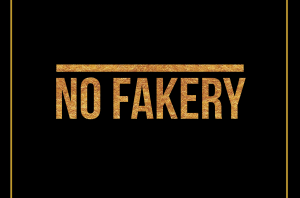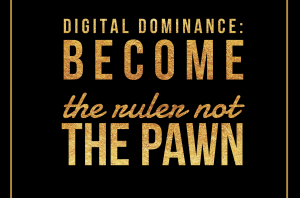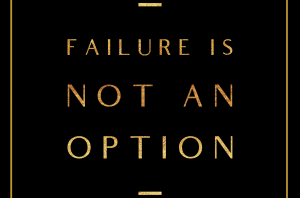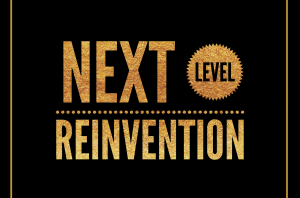It takes more than a great idea to ensure a financial success. Meet the people who hit the jackpot in the App Store
iklas Hed is describing the moment the billion-dollar app Angry Birds was created. “I was sitting in a meeting with our lead designer, Jaakko Iisalo, who presented 10 new game ideas and talked us through a long written document about each one. Then, right at the end, he showed us this last thing which was only an image – a sketch of some coloured blocks, a flock of birds and some smoke and dust.” For some reason, Hed says, he felt that single sketch conveyed a lot of energy. “There wasn’t a proper game idea behind it at that moment. But I fell in love with that image and its energy. I just got a feeling that this was the game we should develop.”
At the time Rovio, the company Hed had co-founded, was devoting most of its resources to developing games for other people. “Angry Birds was our 52nd game and it started off as a side project.” Iisalo’s sketch eventually became the now-famous game in which players must help angry-looking birds save their eggs from their enemies the pigs. But with little time and budget allotted to it, the app’s development hit setbacks. “At one point, after the summer holidays, we felt the spark was gone and we nearly killed it. Thank God we didn’t.”
Just months after its release in December 2009, Angry Birds was the number one paid app in Apple’s App Store. By 2011, 123 million people had downloaded it and it had become the best-selling app of all time. It has since been downloaded more than 3.7bn times and spawned an animated series, toys, cookbooks, bird books, comics, soft drinks and a blockbuster movie. When Rovio launched on the stock market a fortnight ago, it was valued at more than $1bn.
“Of course, there have been moments of elation and happiness, but when I think back, what I remember feeling most is worry,” says Hed. “I knew exactly how fragile our success was, and how hard it is to get to the number one spot.”
If you have an idea for an app, you will be glad to hear that the money generated by downloads, mobile commerce and in-app advertising in the UK is increasing. By 2021 it is estimated that the UK app economy will be worth about £83bn, up from £22bn last year, and the average in-app spend of £3.50 per hour per person in the UK will rise to £8.35 an hour in the next five years, the analytics company App Annie predicts.
Creating a popular app could certainly prove lucrative. Nearly 5,000 developers are estimated to have made more than $1m in 2016, and a survey of more than 22,000 developers by SlashData last year found almost one in five earn more than £19,000 a month. However, the survey also found that 41% of developers earn less than £75 a month on average, and the vast majority (71%) earn less than £45,000 a year.
So how do you make money from apps? “There is no simple answer, because if there was everyone would be successful at it,” says Jason Laan, whose photo app Face Swap Live was one of the top paid-for apps in the Apple App Store last year. “My app was successful because people could create funny photos and videos and then share them. It had a viral component to it.”
Nearly 1,000 apps are submitted to the app store each day, and Laan estimates he is competing with more than 13 million other developers. “There are tons of amazing apps out there that no one knows about. To stand out from the competition you need to make something that people want to use, and that you can get users to know about.” This is why, he says, many popular apps at the moment are from celebrities or shows, or reflect a current meme: “They are riding a marketing wave.”
Marketing can make all the difference, suggests Rego Apps founder, Allen Wong, who became a multimillionaire off the back of his police scanner radio app. “A slightly inferior app can outsell a superior product if your competitor markets their app well. Every sale lost to a competitor puts you further down on the search results list and the ranking charts. Without being on the top of those lists, you lose exposure to potential buyers and that further puts you lower down the list.”
Ian Schenkel, who earned £8m from his app PrintCentral, says many developers make the mistake of spending far too much money on developing a shiny, beautiful interface rather than prioritising their marketing budget and getting their app released. “As a start-up you need to create a striking app that’s appealing and functional, and then as you go along you can update it. The most important thing is to be clever about your marketing.”
After spotting a gap in the market in 2010 for an app that allowed people to print from their iPads, Schenkel and his brother quickly built and released PrintCentral before Apple incorporated a printing functionality into its operating system. At one point they were selling a £4 download every 50 seconds. “By the time Apple’s system had caught up, we had momentum and we’d learned stuff about the market.”
Marketing an app, he says, doesn’t have to be hugely expensive. “PR is important – getting stuff written about your app and getting reviews – and so is social media. Utilise your network.”
Haven’t got a network of users, testers, tech journalists and investors? Then you will need to build one before you launch, says the Junto Network founder Danielle Newnham. She ran an award-winning mobile app agency for seven years and has written two books about tech entrepreneurs. “You can create an incredible app, but if no one can find it on the app store it won’t do well.” She advises entrepreneurs to write blogs about their app, give talks, rope friends into testing, befriend other techies, read up on similar apps and target the journalists who covered them. “Get people involved and emotionally engaged in what you are doing, so that when you do launch they can help spread the word.”
She also recommends framing the purpose and function of the app with a story you can tell. “Half the battle with marketing an app is finding a unique story which helps to sell the product.”
Katie Massie-Taylor took this storytelling approach when she and Sarah Hesz, a friend she met in a playground, launched Mush, a social app for parents dubbed “Tinder for mums”.
“We thought there needed to be a more modern ways for parents to find each other and avoid feeling lonely,” she says. They built the app for £50,000 while on maternity leave, launched it 18 months later, got some positive press and say they now have hundreds of thousands of users. But because their app is free their revenue is via in-app sponsorship; they only recently managed to start paying themselves a salary.
“With social networks, it’s about getting a critical mass of users before you’ve got enough value for the customer that they’re willing to pay for it,” says Massie-Taylor, adding that venture capitalists understand this approach, and Mush has attracted a £1.2m investment. “To be a viable business, we know we’ll have to start charging our members for a certain element of usage in the future. But we want the basic app to always be free so we can fulfil our original mission to help parents connect.”
Newnham, Schenkel and Hed all advocate this “freemium” model, where a basic version of an app is offered for free, but users must pay for premium content or enhanced features or to eradicate annoying adverts or watermarks.
“There is this myth that charging for your app will make you the most money the quickest, but what mobile gaming has taught us is that the freemium model works very well,” says Newnham. “It is now very hard to make money from a paid app unless you have a loyal following. We are given so much content for free nowadays that consumers won’t want to jump through hoops or part with cash. But if your app is easy and appealing to download, and engaging enough that using it becomes a habit, they will happily pay extra further down the line.”
Develop your aptitude
• “The path to success lies in originality,” says Danielle Newnham. “Find the problem and then innovate the solution.” She explains that successful apps take an age-old problem of convenience, such as finding a parking space, and create an innovative way to solve it.
Think about your target audience and how you can make it as mass market as possible,” says Niklas Hed. “If it’s a game, look at whether the game mechanics, graphics and genre fit that audience. Then consider how, in a world of free games, you can monetise the app in a way that the audience feels is a good trade for a good experience. They need to feel more than happy to put money into the game. If all those aspects are aligned, your app doesn’t need to be perfect – just good enough.”
• “Make sure your app has global appeal,” says Ian Schenkel. “Don’t limit your app to your local market – it may be quite cheap to translate it into other languages.”
• “Be open to different ways of making money from your app,” explains Katie Massie-Taylor. “This can buy you time to work out how to make more money long term. But don’t get distracted from the end goal of providing amazing value to the customer.”
• “Make your app creative and engaging,” says Newnham. “Apps like Marvel can help you turn sketches into usable prototypes.”
Click here to become a Slaylebrity curator.
By The Guardian





